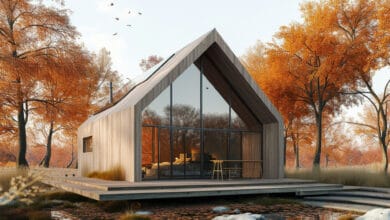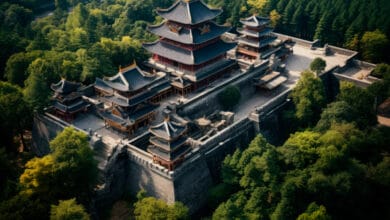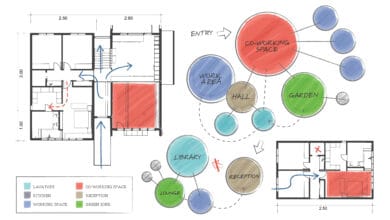Baroque vs Renaissance Architecture: A Quick Comparison

Step into a world where Architecture is more than just stone and mortar- where every curve and detail speaks volumes of artistic passion and historical influence. Dive into the clash of Baroque vs Renaissance Architecture, two of history’s most transformative styles. These architectural giants not only sculpted the skyline of European cities but also redefined our understanding of space and beauty.
What is Renaissance Architecture?
Renaissance Architecture denotes the architectural style that developed during the Renaissance, a European historical period that began in Italy and replaced the Gothic style between 1400 and 1600. Architects distinguish this style by its classical orders, precise proportions, and emphasis on symmetry and harmony. The Renaissance approach creatively incorporates columns, arches, pediments, and domes into various building types.
Italian Renaissance Interior Architecture was a developing movement that is now commonly divided into three stages:
- Early Renaissance (circa 1400), the initial revival of classical ideas
- High Renaissance (circa 1500), the full-fledged revival of classicism
- Mannerism (also known as Late Renaissance, c. 1520-30 onwards) A period marked by more decorative and inventive uses of classical themes.
Historians often disagree on the exact timing of these stages, with variations depending on geography and specific cities.
What is Baroque Architecture?
Baroque Architecture refers to the visual arts, opulent-style building design, and construction created throughout the 17th century in Western art history. It is the structural manifestation of a larger movement in art and design known as the Baroque period, which included similarly elaborate and dramatic visual and musical works.
Designers define this style through intricate motifs, organic curves, and bold, vibrant colors.
Gian Lorenzo Bernini, renowned Italian architect and sculptor who was a key figure in Baroque Architecture, once said:
“The Baroque is the only style that can be described as a true art of the masses. It appeals to all levels of culture, tastes, and sensibilities.”
Popular Examples of Baroque and Renaissance Architecture
Renaissance Architecture
- Florence Cathedral (Il Duomo)- Completed in 1436 by Filippo Brunelleschi, this iconic cathedral features a revolutionary dome with a harmonious balance of form and function, embodying the Renaissance ideals of symmetry and proportion.
- St. Peter’s Basilica (early design)- Donato Bramante drafted the first plan for the church. This landmark began as a Renaissance project with its emphasis on classical forms and proportions, setting the stage for its later Baroque transformation.
- Villa La Rotonda- Andrea Palladio designed this Renaissance villa, which architects praise for its perfect symmetry and classical elements that reflect Renaissance ideals of proportion and harmony.
Baroque Architecture
- St. Peter’s Basilica (completed with Baroque elements)– Finished by Gian Lorenzo Bernini and Michelangelo, this masterpiece of Baroque Architecture features dramatic spaces, elaborate ornamentation, and a grand dome that epitomizes the Baroque style.
- Palace of Versailles– Architects Louis Le Vau and Jules Hardouin-Mansart designed this palace, the epitome of Baroque opulence, known for its grandeur, lavish décor, and vast gardens.
- Church of Sant’Agnese in Agone– Facing onto the Piazza Navona, Rome, this 17th-century Baroque church features dynamic curves and intricate detailing. Designed by Francesco Borromini, Girolamo Rainaldi, Carlo Rainaldi, this sacred place reflects the dramatic and expressive nature of the Baroque style.
Characteristics of Baroque and Renaissance Architecture
So, What are the key elements to look for in Baroque and Renaissance Architecture? Let’s read on to find out.
Baroque Architecture
- Frescoes: Frescoes are paintings on walls or ceilings, like those found in Michelangelo’s Sistine Chapel. During the Baroque era, frescoes were especially popular because they aligned with the Catholic Church’s goal of inspiring awe and reverence through art and architecture. Often depicting biblical figures, these paintings in Baroque churches helped connect worshippers with key events from the Bible and the life of Jesus Christ.
- Gilded sculpture on the interior and exterior: Statues crafted from plaster or marble, often richly colored and textured, contributed to the lavishness of Baroque architecture.
- Mannerism: Baroque architecture was deeply influenced by Greek classicism and the Renaissance. However, Mannerism marked a significant departure from the strict adherence to symmetry and form, embracing optical illusions and experimental techniques to evoke a sense of wonder. This artistic approach left its mark across various forms of art, including architecture.
- Double-sloped mansard roof: The mansard roof, with its distinctive double slope, is a hallmark of French Baroque architecture, frequently seen in châteaux and country estates.
- Trompe l’oeil: This technique, which means “to deceive the eye,” built on the Renaissance obsession with perspective. By mastering and pushing the boundaries of perspective, artists were able to create the illusion of figures emerging from flat surfaces.
Renaissance Architecture
- Symmetry and Proportion: Italian Renaissance Interior Architecture is defined by a strict focus on symmetry, balanced proportions, and mathematical ratios. Architects like Leon Battista Alberti and Andrea Palladio championed these ideals, drawing inspiration from Vitruvius’ ancient works.
- Renaissance and Ancient Elements Mixed: Renaissance architecture borrowed features from Greek and Roman structures, without directly copying them. Patrons encouraged architects and artists to design elements that complemented ancient motifs. Michelangelo often innovated upon ancient designs, urging his colleagues to do the same.
- Humanism: Renaissance architecture reflected the era’s humanist ideals, emphasizing the dignity and potential of humanity. Designers often created buildings that harmonized with their surroundings and matched human proportions.
- Ornamentation: In architecture, ornamentation involves using decorative elements to distinguish buildings, furniture, and household items. Entablatures, columns, building tops, and around entryways and windows are frequently ornamented, particularly with moldings. This embellishment, often symbolic, was crucial during antiquity, the Renaissance, and later periods, particularly in religious buildings.
- Arches and Columns: Renaissance architecture made extensive use of arches and columns, drawing heavily from classical traditions. Special attention was given to the historic orders—Doric, Ionic, and Corinthian—which defined the shape and decoration of columns. These columns supported arches and other classical architectural elements like architraves, primary horizontal supports, decorative friezes, and cornices.
Similarities between Baroque and Renaissance Architecture
Baroque and Renaissance architecture differ in style but share traits, as Baroque grew from Renaissance foundations. Here are the main similarities between the two styles:
- The Renaissance and Baroque followed the Middle Ages, both leaving a lasting impact on European art and architecture. Both styles primarily focused on Judeo-Christian and Greco-Roman themes, shaping the cultural landscape of the continent.
- Renaissance and Baroque architects used classical ideals to create balanced, human-scaled, and visually striking spaces. These architectural styles were part of broader cultural movements that also saw advancements in art, literature, and science.
- In both periods, Architecture often blended with painting, sculpture, and decorative arts to create a comprehensive aesthetic experience.
- Architects used these styles for both religious and secular buildings, especially churches, palaces, and public spaces.
Baroque Vs Renaissance Architecture – The Key Differences
The Renaissance came first (14th–17th century), followed by the Baroque (17th to mid-18th century). However, we’ll explore the stylistic differences and historical contexts of both periods below.
Time Period
Renaissance Architecture: Italian Renaissance Interior Architecture emerged from the Middle Ages, marking a momentous historical transition towards modernity. The revival of classical art, combined with new insights into science, nature, and human anatomy, profoundly influenced Renaissance art. Renaissance ideas began in Florence but quickly spread, as each nation developed its own style.
Baroque Architecture: In comparison to Renaissance, the Baroque period arose from Mannerism, or the late Renaissance period, when artists began experimenting with greater theatricality and emotional depth. It started in Rome in the seventeenth century and spread throughout Europe.
Architectural Elements
Renaissance Architecture: Characterized by the use of classical elements like domes, columns, arches, and pilasters, Renaissance buildings typically featured symmetrical layouts and emphasized horizontal lines.
Baroque Architecture: Distinguished by more complex and dynamic forms, such as curved lines, undulating facades, and oval spaces. Baroque designs often employed exaggerated motion and ornamental details to evoke a sense of movement.
Use of Light and Space
Renaissance Architecture: Used natural light to enhance clarity and order within spaces, with clearly defined boundaries and an emphasis on geometric forms.
Baroque Architecture: Dramatically employed light and shadow (chiaroscuro) to create visual contrasts, adding to the sense of movement and depth. Designers created fluid, complex spaces with flowing rooms and domes that drew the eye upward.
Conclusion
Though Baroque vs Renaissance Architecture differ, particularly in ornamentation and dynamism, both are rooted in classical antiquity, emphasizing symmetry, proportion, and the integration of art and Architecture. Each style has played a crucial role in shaping Western architectural traditions, leaving a lasting legacy in the design of structures celebrated for their beauty and innovation.



